Tibialis Posterior: The Most Important Muscle You Didn't Know you Had
While I’m sure the title for today’s post is probably about as sexy as watching Bea Arthur do long division in a dominatrix outfit, the big bang for your buck will come when you figure out what to do with your running, squatting, and pretty much everything that may be going wrong with your technique on exercises where your feet are in contact with the ground.
There’s a lot of talk about how the foot is the foundation of all movement, but little talk involved in how to adapt the foot to make it stronger, more stable, or otherwise adaptive to the environment it’s in. We throw some minimal shoes on the feet and expect them to instinctively adapt to the surface they’re on, and then proceed to pound the hell out of them on flat level pavement for hundreds of impacts and wonder why they soles and achilles hate life. That pronated foot doesn’t get “fixed” by having the ground slam into it all the time, it gets beat to hell.
SO we need to take a step back from the foot wear and look at the foot itself. I mean, if you were to just look at the function of a winter jacket, it would be to keep its’ occupant warm on a cold winter day. This says nothing about who the occupant is, or whether the jacket is the right size or even if it’s made for a man or woman, or for that matter an incredibly fashionably outfitted marsupial perusing some Swedish-made furniture in Lower Canada.
[youtuber youtube=’http://www.youtube.com/watch?v=4i4GNFENB0k’]
In very few situations will we actually see a flat foot that is caused by some sort of structural issue, like arthritis, joint deformities, or something else along that line. The foot is a loose sack of bones that is designed to conform to the surface it comes in contact with. This was all well and good before the entire world became a Wal Mart parking lot and paved everything became the norm.
When we had to walk through rocks, gravel, tree roots, and everything else that came in the way, the foot did a fantastic job, but slam those puppies in some Jimmy Choo’s with a jacked up heel and walk through the mean streets of downtown Edmonton, and your dog’s are going to be barking. No wonder the arches of your feet packed up and shipped off to the promised land like so many elves in Lord of the Rings. At least the hobbits knew about the proprioceptive benefits of barefoot walking towards Mordor.
So this is where the protagonist of our little adventure comes into play. The tibialis posterior is a tiny muscle with a big responsibility. It works in conjunction with the peroneals and the tibialis anterior to provide a level of stabilization of the foot and ankle under the tibia. The tib post (as it’s known in the ghetto) and tibialis anterior on the medial side of the foot and the peroneals on the lateral side form a kind of stirrup around the foot to help control the inversion and eversion of the ankle, and as such help to dictate the height of the arch of the foot. Too much inversion leads to a fallen arch that stretches the plantar fascia and reduces the elasticity of the foot to produce a kick forward when running or walking, whereas too much eversion leads to a high arch that can’t conform to the ground.
[youtuber youtube=’http://www.youtube.com/watch?v=Q4S9AVio50Y’]
The effect of this inversion can cause someone jumping, squatting or deadlifting to have their knees cave in towards each other in a valgus stress that’s been shown to increase knee and hip injuries. The increased drive of the knees is more than the hips can tolerate, which makes people wind up rounding their back to compensate for the lack of hip range of motion, and creates a whole cascade of crap-tasticness through the entire system, all because a couple muscles weren’t doing their job to give the foot the best position possible to hold up the rest of the body.
[youtuber youtube=’http://www.youtube.com/watch?v=32cwwoh5xSM’]
While the caving in could be coming from the hip or the foot, from my experience the foot tends to suck with respect to positioning in these individuals, and fixing the positioning tends to drastically reduce the valgus collapse much faster and better than trying to strengthen the hips.
A weak or inhibited tibialis posterior (as well as the flexor hallicus longus) will help that foot dive into inversion quick, and the end result is calamity and bedlam only foreseen by the Mayans when they marked the world’s end next week.
The opposite problem can occur too, where the tibialis posterior is jacked up and tight. We can see this with a great real-life example from a client of mine.
Check out the rotational bias from the right ankle (left image) to the kneecap and femur. This light rotation can wreak havoc on the knee joint. Looking at the left foot (right image) and how the ankle seems to be curving in hard from that over-active tib post means when he has his foot in contact with the ground, that sucker is going to cause tension somewhere else, like the low back and SI joint.
Now compare the above images to what his legs look like after about a minute and a half each of some myofascial manipulation of the tib post muscles.
So after about 5 minutes of total time, he was able tog et more squat depth than in the previous 5 years of working out, which pretty much made his eyes pop out of his head. Additionally, he mentioned afterwards that his feet and legs felt forgein, but that he now knew what it should feel like when his foot hit the ground and how to adjust to make it feel better, and as a result, low back pain had reduced dramatically.
The best way to get into the tib post while doing and self-myofascial release is to take something like a LAX ball, street hockey ball or golf ball, and roll face down into the ground with the leg extended to the side, putting the ball into the small gap between the medial shin and the calf muscle. Once you tear into that one, hit up the adductor on the inner thigh while you’re at it, as they share a fascial train.
So what can you do if you have flat feet?
The biggest thing to work on is trying to condense your foot. Imagine you have a tripod at the base of your foot, where one point is under the big toe component of the ball of your foot, the other is under the pinkie toe part of the ball, and the last part is the heel. This tripod gives you the greatest chance of having a solid foundation to generate force from when in standing position, and gives you the best balance to avoid falling over.
This conceptualization of the foot follows the three main arches in the foot and let’s you have the best chance of taking advantage of the leverage inherrent to the foot structure. From here, try to draw all three points closer together by contracting the muscles of the foot, but try not to curl the toes. Once you feel the tension of the foot condensing, you’ll probably notice the position of the foot has changed and you’ve developed a higher arch on the inside of the foot. You may also have some muscle tension deep in the calf and the bottom of the foot, but also on either side of the ankle. From here, try to keep the condensed tripod, and open your toes as wide as possible, then grip the floor with your entire foot and toes, making your foot feel like it’s holding a plank.
Try to hold this foot condensed position while doing a simple exercise like a body weight squat, hip hinge, or whatever you’re in the mood for today, and you’ll notice a big difference in how your hips and knees feel and move.
Anthony Mychal had a great section in Muscle Imbalances Revealed: Assessment and Exercise that talks about the foot tripod position and how to achieve the best balance between the three points and get the foot to work properly, and his approach is very effective while being simple to pick up and put into action. I discussed his contributions HERE if you’re interested in seeing it. Consider it an early Christmas present to yourself to help you squat and deadlift and run like a monster. Just a monster without jacked up feet.

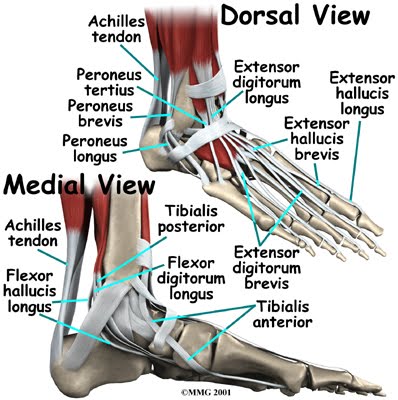
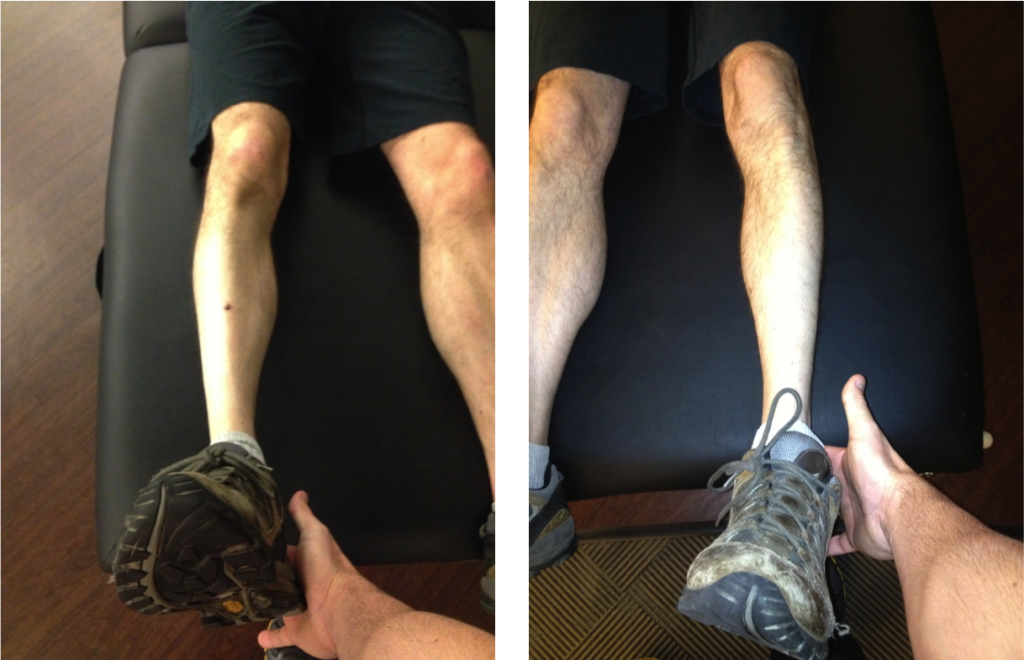
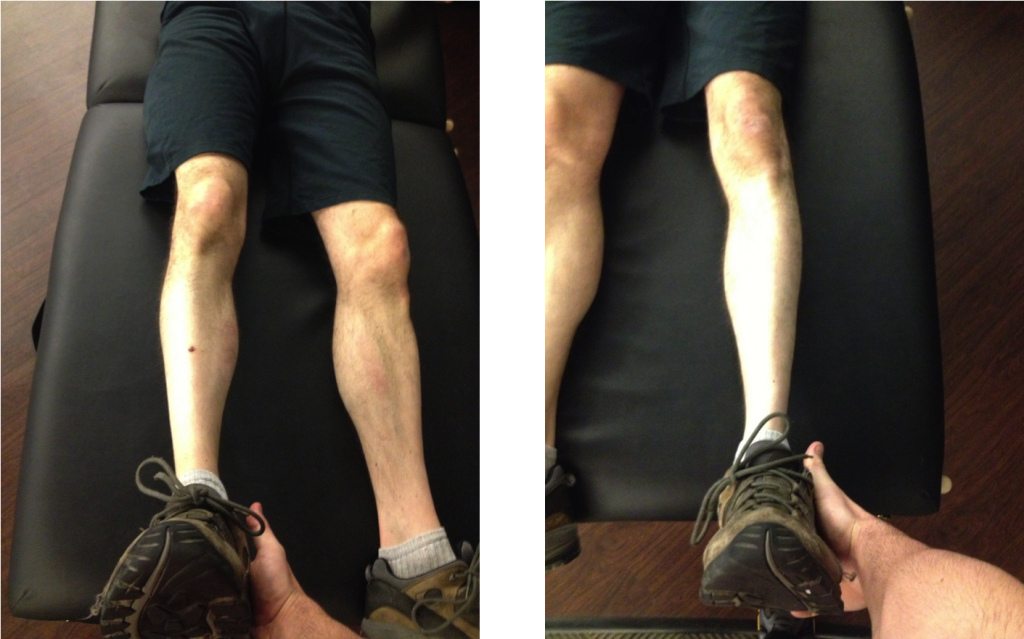
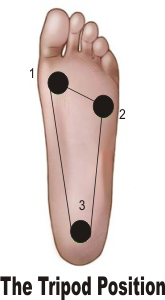
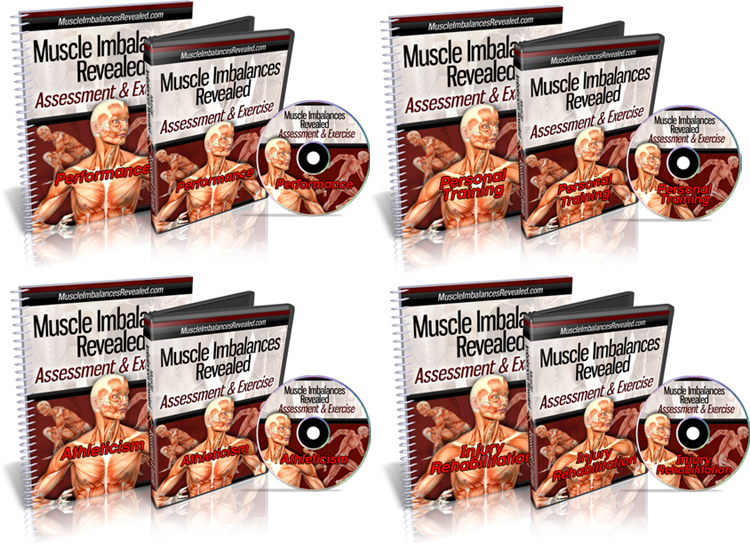
26 Responses to Tibialis Posterior: The Most Important Muscle You Didn't Know you Had